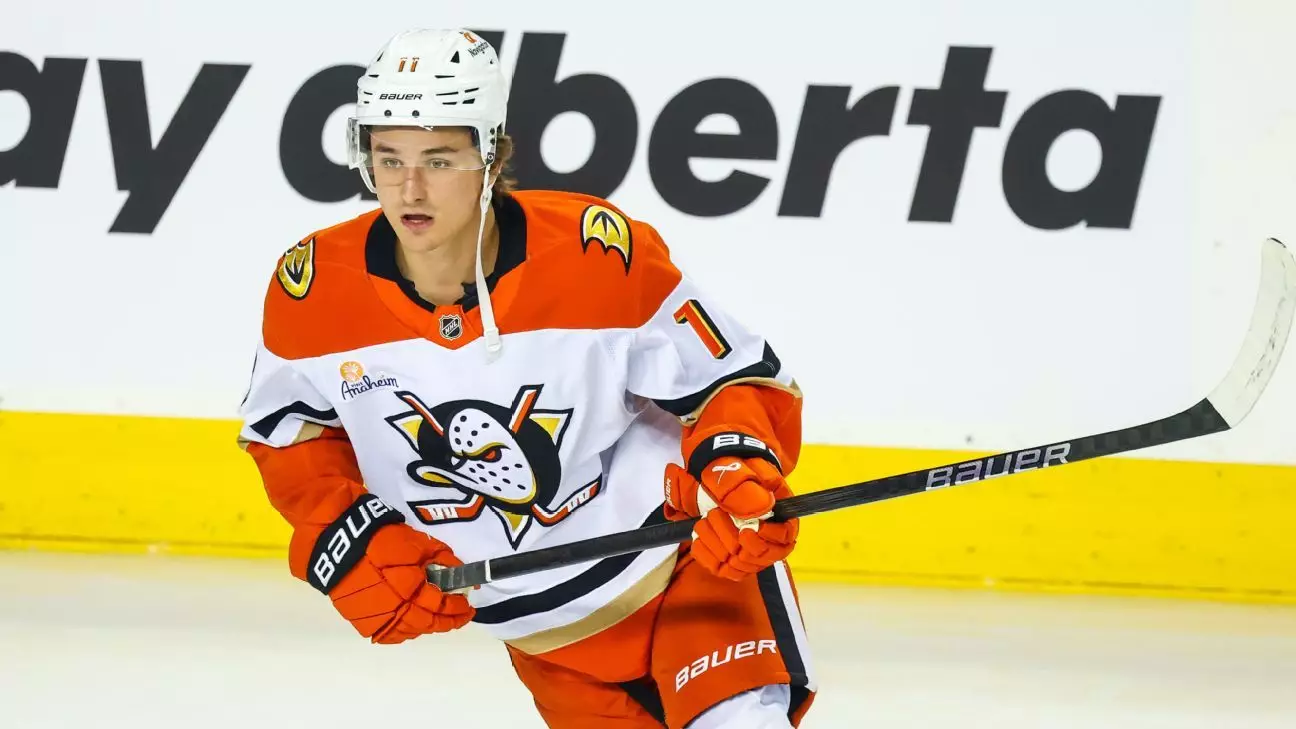The fervor surrounding Trevor Zegras has reached a boiling point, leading the Anaheim Ducks to make a bold move by trading the dynamic forward to the Philadelphia Flyers. This transaction, marked by the exchange of Zegras for Ryan Poehling and a couple of draft picks, presents an intriguing development in the NHL’s eastern conference. While this trade can be depicted as a gamble for both teams, the implications extend far beyond the immediate player swap, especially when considering the potential of Zegras as an emerging talent in the league.
At the heart of this deal is the concept of “potential.” The Flyers have added a player who, at just 24 years of age, has already flashed considerable talent, boasting two 20-goal seasons and back-to-back 60-point campaigns. The addition of Zegras is a calculated move for the Flyers, who are desperate to improve on their offensive woes after ranking 24th in goals per game last season. The hope is that Zegras will not only contribute significantly but also evolve into a cornerstone piece for the franchise alongside other burgeoning talents.
Zegras’ Rollercoaster Journey
But Zegras’ path has not been without its obstacles. Injuries and fluctuating performance levels have raised eyebrows regarding his consistency, putting a damper on the expectations set from his impressive earlier seasons. Consequently, he becomes a player laden with questions for the Flyers. Can he rediscover his fire after facing setbacks? The answer could lie in the caliber of players surrounding him. By integrating Zegras with other offensive talents such as Tyson Foerster and Travis Konecny, the Flyers can foster an environment conducive to growth, pushing him back towards stardom.
His appeal to the Flyers is substantial not only because of his past successes, but due to his pending contract situation. Entering the final season of a three-year deal worth $5.75 million, Zegras comes with the added bonus of being a restricted free agent (RFA)—a fact that gives the Flyers additional leverage in managing their cap space. Furthermore, the Flyers’ financial health post-trade leaves them with over $15 million in cap space, allowing for further roster improvements down the line while auditioning Zegras for an extended role.
Assessing the Ducks’ Decision
From Anaheim’s perspective, relinquishing Zegras comes with its own set of ramifications. The Ducks are threadbare in several roster aspects, yet the emergence of young talents like Leo Carlsson and Mason McTavish has potentially paved the way for a transition phase. Both players displayed impressive stats last season, with Carlsson’s 20 goals and McTavish’s 52 points signifying a robust upward trajectory. The organization’s focus on nurturing these prospects likely contributed to the decision to part ways with Zegras.
Moreover, financial prudence plays a crucial role in the Ducks’ strategy moving forward. With an enticing $36 million in cap space available, the team must navigate future RFA contracts for emerging stars meticulously. Retaining the talent they’ve developed is a priority; thus, trading a player who may demand a substantial pay increment negates some uncertainty as they approach the negotiation table this summer.
In addition to financial flexibility, acquiring Ryan Poehling opens new doors. This 26-year-old forward had a solid performance last season with 12 goals and 31 points. With one year left on his contract at an agreeable $1.9 million, he offers a suitable alternative without breaking the bank, allowing the Ducks to bolster their depth and potentially save resources for future signings.
Long-Term Perspectives and Future Implications
Both franchises seem aware that trades of this nature are defined not merely by immediate impacts but also by long-term ramifications. For the Flyers, Zegras represents not just a solution to their scoring problems but a gamble on a young player whose potential remains largely untapped. Conversely, the Ducks are betting on their roster’s growth potential, prioritizing those who can carry the franchise forward without the burden of crippling contracts.
As we contemplate the future, it is crucial to realize the fluid dynamics of the NHL, where prospects and established stars alike can shift the balance of power. If Zegras can reclaim his form, the Flyers may well have struck gold; on the flip side, if Anaheim’s young core develops as projected, the Ducks could emerge as a potent contender in the near future. The verdict on this trade will unfold over the next few seasons—a testament to the gamble inherent in professional sports.


Leave a Reply